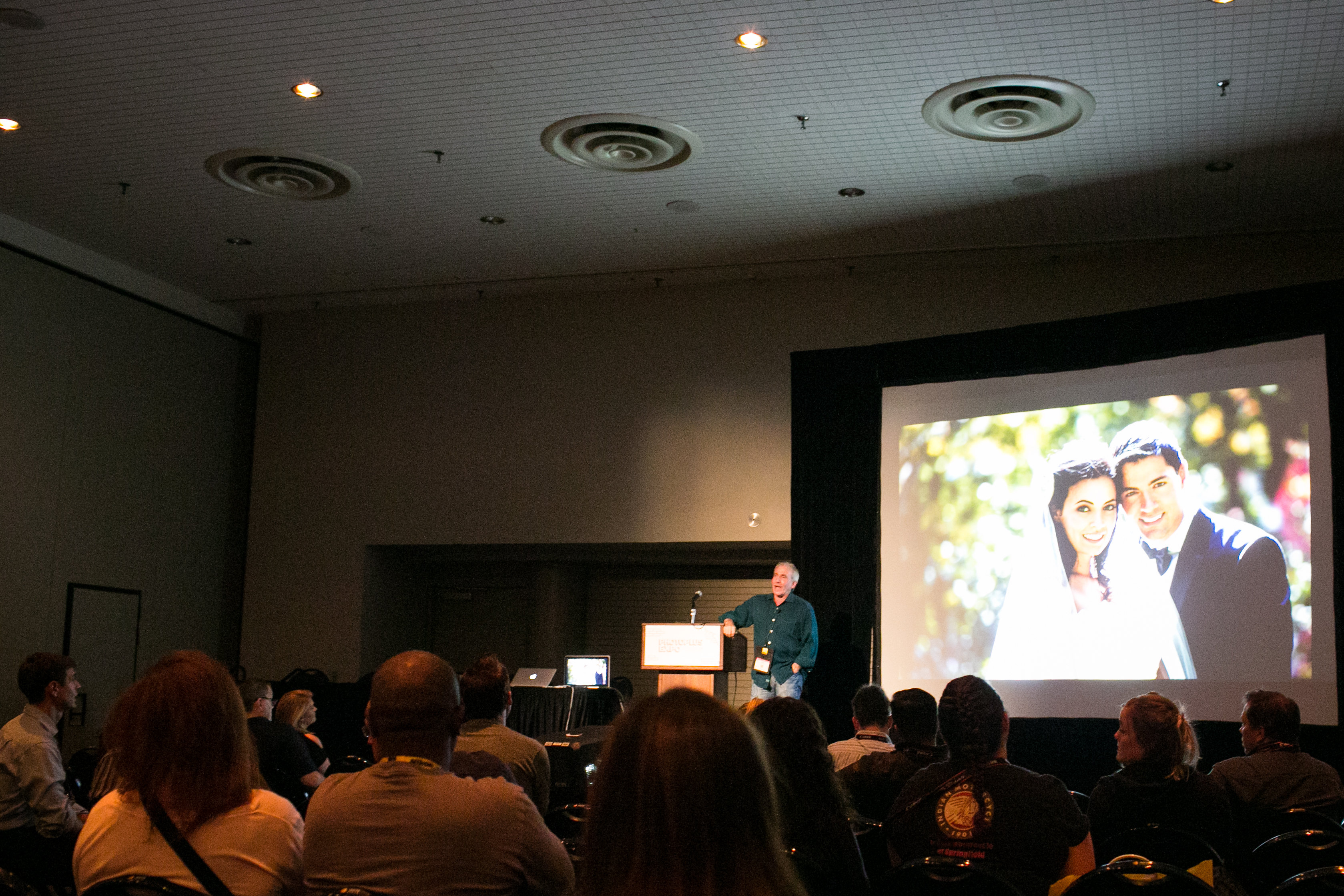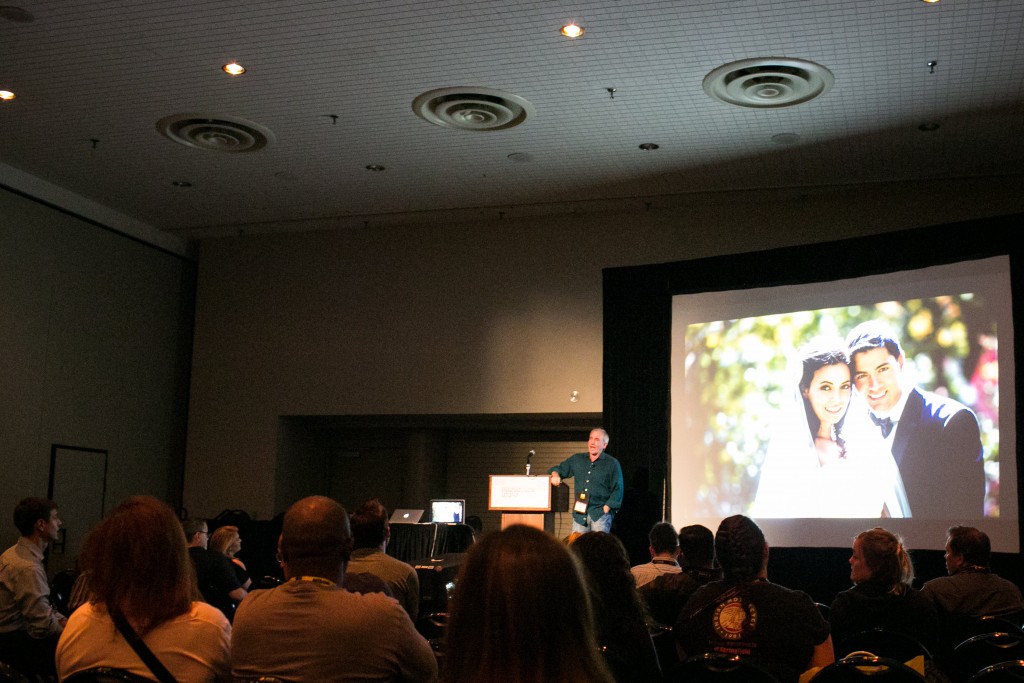Wedding photographers looking to expand on their lighting skills got plenty of advice and practical tips at Cliff Mautner‘s course, Lighting Essentials for the Wedding Day, at PhotoPlus Expo last week. The veteran wedding photographer and Nikon Ambassador took a deep dive into his approach to include everything from the early-morning bridal-party prep to the evening ceremony and the ambient light-filled reception.
While Mautner also shared a number of ways that he uses different lenses (he often counts on eight or nine to shoot a wedding) and cameras (he also brings along several Nikon bodies from his arsenal), his best tips and takeaways (three of which are summarized below) cater to all types of shooters and environments.
1. It’s About Quality of Light, Not Quantity
What happens when you’re in a room and all that’s available is fluorescent light? For starters, Mautner suggests that you avoid using speed lights. Instead, find a window and ask your bride to navigate toward areas with better lighting. “If you tell the bride, ‘I’m unable to do the work that you hired me to do here, but there’s great lighting in the room right down the hall, do you mind if we move over there,’ you bet she’s going to say yes.”
And what happens if the window is small and there’s only a minimal amount of natural light available? “You make it work,” Mautner says. “Utilize dramatic light. Juxtapose highlights against shadows.”
This isn’t to say that Mautner avoids flash altogether. Often he’ll use fill when taking family portraits—both indoors and outside. In those situations, here are a few tips he offered for using flash:
- Get an exposure and then underexpose one to two stops. Try to stay two stops under the ambient reading to look natural when using flash at a reception. Then use the speed light to fill in the underexposure.
- Look for a neutral background. This will ensure black suits or white dresses don’t get lost.
- When using flash, manual is more consistent than TTL.
2. Embrace Intense Sunlight
Stuck doing a first look at 1 p.m.? “Do not run for the shade,” Mautner advises. To capture the beauty of the natural light, he suggests photographers put the subject between themselves and the sun, and then expose for faces, not veils. Finding a darker background, like a group of trees, will help as well, allowing the the back light to create a halo-effect around the subject.
For 5 p.m. shoots when the sun is starting to set, Mautner advises photographers to find patches of light. “Seek and ye shall find,” he says. “Find those patches of light and put your clients in it. Use that light to create texture and you’ll be shocked by some of the results.” Once a photographer has found that patch of light, Mautner says the thought process is the same for the high intensity 1 p.m. shots: put your client between you and the sun.
3. If It’s Not Innate, You Can’t Create
When it comes to shooting on the big day, there’s no time to stop and think about the technical aspects of your work, Mautner says. “Exposure and focusing has to be innate,” he told the audience. “To quote Ray Bradbury: ‘Don’t think. Thinking is the enemy of creativity.'”
In order to make great photos and be truly creative, Mautner encourages photographers to know the technical details instinctively, such as the different purposes of their lenses and how to adjust for various lighting situations.
Related Links:
Four Cool Things We Spotted at PhotoPlus Expo Test Drive






